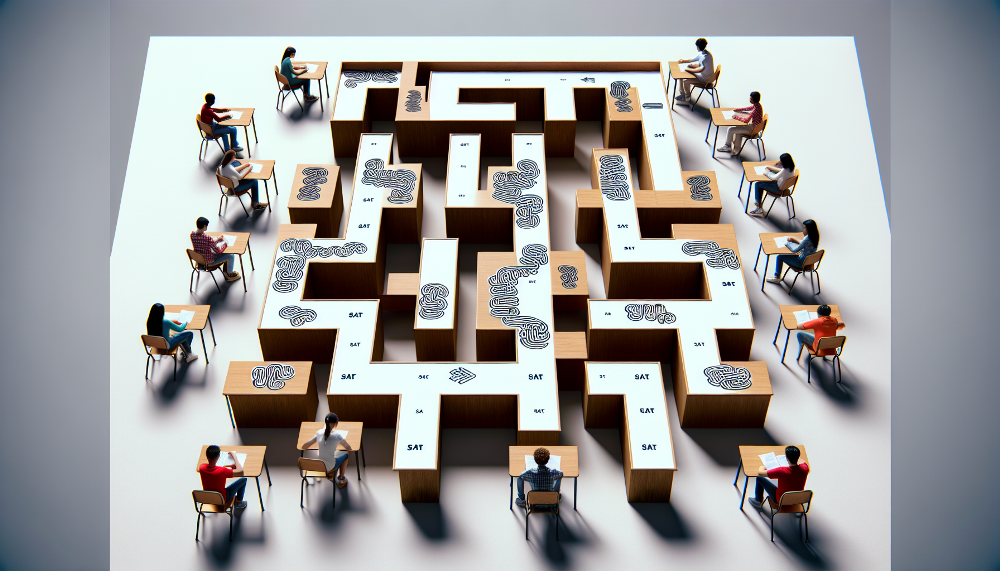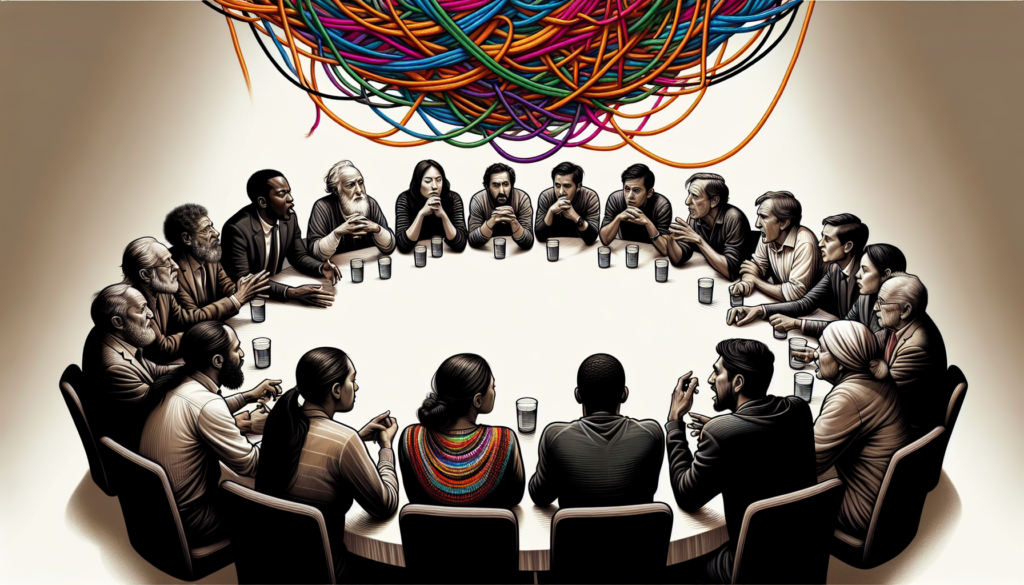The question ‘Are IQ tests racist?’ necessitates a critical analysis of bias across these standardized assessments. This investigation delves into the origins, use, and cultural relevance of IQ tests, seeking to discern if they serve as unbiased measures of intelligence or reinforce racial inequities.
Key Takeaways
- IQ tests and intelligence assessments have historical roots in racial bias, with early testing methods intertwined with eugenics and discriminatory practices, including the use of such tests to support immigration restrictions and segregation.
- Standardized tests, including the SAT, contribute to racial and economic inequalities by consistently showing score disparities that disadvantage black and Hispanic or Latino students. These disparities impact college admissions and career opportunities, raising the question: are IQ tests racist? This is due to test bias and systemic issues.
- Efforts to reduce racial bias in intelligence testing include implementing culturally neutral test content, alternative assessment methods that better capture diverse intelligence, and promoting diversity and inclusion in test development, although challenges remain in eliminating such biases.
The Origins of IQ Tests and Racial Bias

Racial bias and intelligence testing share intertwined roots. Our journey begins with the Stanford-Binet Intelligence Scale, the first practical intelligence test, crafted by Alfred Binet and later revised by Lewis Terman. Terman suggested that racial differences in intelligence were inherent, a belief that cast a long shadow over early intelligence tests.
The early 20th century was a time of simmering racial tension, and the field of intelligence testing was not immune. During World War I, standardized tests were employed to categorize soldiers, leading to segregation by race and test scores. During this period, eugenicists like Francis Galton stirred up interest in the study of mental abilities. They proposed that intelligence varied among different racial and ethnic groups. Nonetheless, a shift in thinking started to emerge during the 1920s. Psychologists began challenging the assumptions of racial differences in intelligence. They attributed such disparities more to environmental factors and smaller genetic influences than previously believed. By the 1940s, explanations for IQ disparities widely recognized environmental and cultural factors. This recognition was influenced by economic shifts from the depression and contributions from psychologists with diverse backgrounds.
Still, the past continued to cast a long shadow. Early IQ tests, like those created by Robert Yerkes, were intended to support immigration restrictions to the US. This was based on presumptive lower IQ levels among certain groups from Southern and Eastern Europe. The bigotry of leading social scientists during the rise of standardized testing was evident. Their concern about the increased presence of non-whites in the nation’s public schools underscored this prejudice.
Reflecting on this history, we can see how the origins of IQ tests were steeped in racial bias. How has this historical bias influenced today’s role of standardized testing, especially in perpetuating racial inequality? Let’s examine this further.
The Role of Standardized Testing in Perpetuating Racial Inequality

Standardized tests, including the Scholastic Aptitude Test (SAT), have been identified as structural roadblocks in the path to racial equality, prompting the question: are IQ tests racist? Data reveals a persistent racial gap in SAT scores. Black and Hispanic or Latino students routinely score lower, especially on the math section. This disparity contributes to racial inequalities in college admissions and academic paths. It reinforces the concern that racial bias may be embedded in the realm of intelligence tests.
These lower scores significantly underrepresent Black and Hispanic or Latino students at selective universities. The ripple effect of this underrepresentation is felt in their higher education and career opportunities. It reinforces the cycle of racial and economic inequality. Moreover, test scores are a less reliable predictor of these students’ future academic achievement. Low scores can perpetuate a self-fulfilling prophecy by negatively impacting self-perception and performance.
Despite an increase in SAT participation among all racial groups, standardized tests continue to replicate racial and economic inequality, hindering the academic and professional progress of minority students. A deeper understanding of test bias and group differences in standardized testing is essential to comprehend this persistent inequality.
Test Bias and Group Differences
The concept of test bias extends beyond the test itself into the realm of how tests are used and can lead to systematic errors. These errors can unfairly deny certain racial or ethnic groups their rightful educational opportunities. For instance, research suggests that factors like family income, parents’ education level, and race significantly influence SAT scores. This highlights potential biases that mirror broader socioeconomic disparities, suggesting a systemic issue that transcends individual tests.
Moreover, standardized testing has been shown to disproportionately disadvantage certain student demographics, including black test takers, as well as:
- Latin(o/a/x) students
- Native students
- Certain Asian students
This bias limits their educational opportunities, further widening the racial achievement gap. In fact, biased testing practices can result in the misplacement of African-American males and English language learners in academic tracks that do not reflect their actual abilities.
Historically, the use of biased standardized tests has perpetuated the racial achievement gap. This has far-reaching effects on minority students’ access to higher education and successful completion rates. Therefore, it becomes apparent that test bias and group differences play a significant role in perpetuating racial inequality.
However, it’s not just about socioeconomic factors and test bias – the issue is compounded by cultural differences in test-taking. For a more comprehensive understanding of the situation, let’s focus on this aspect.
Cultural Differences in Test-Taking

Culture, with its collective beliefs, attitudes, traditions, customs, and behaviors, plays a significant role in test performance. Different cultures potentially exhibit different manifestations of giftedness, influencing the outcomes of intelligence tests. This brings us to the concept of cultural bias in standardized testing, which refers to the disadvantage incurred by test-takers from diverse ethnic or cultural backgrounds that do not align with those of the test developers.
Assumptions made by test developers, such as a lack of linguistic barriers, can create unfair challenges for culturally diverse test-takers. There are contrasting viewpoints on minority students’ performance on intelligence tests, with some attributing low performance to cultural disadvantage, while others argue that cultural differences do not imply deficiency.
Intelligence tests may not be adequately normed for various cultural groups, underscoring the need for score interpretation that accounts for the cultural context of the test-taker. If a standardized test does not accurately assess the intended construct across all cultural groups, it may indicate poor construct validity and result in fairness concerns.
Recognizing these challenges, certain measures, such as the Environmental Context Dashboard for the SAT, established in 2019, were designed to consider cultural and socioeconomic backgrounds as part of the score context, acknowledging external influences on test performance. Despite being a positive move, the journey towards equitable intelligence testing is far from completion.
Controversial Research and Debates on Race and Intelligence

The exploration of racial bias in intelligence tests is entwined with a series of controversial research and debates on race and intelligence. The 1960s saw William Shockley suggesting genetic reasons for lower IQ test scores among black Americans, sparking societal controversy. The backlash against race-related research resulted in the 1950 UNESCO race statement. This statement created a taboo against conducting scientific research on racial issues
In the mid-1940s, the prevailing view among psychologists was that environmental and cultural factors were primary in explaining IQ score differences among races. However, Arthur Jensen’s research in the 1960s reignited the debate over genetic factors in intelligence, suggesting they could explain persistent group differences. Richard Lynn also argued for a genetic basis for racial differences in intelligence, contributing to the ongoing controversy. Despite these claims, the contemporary scientific consensus holds that genetic differences do not account for IQ test score disparities between racial groups.
Within this larger debate, two key concepts stand out and warrant further discussion: the ‘Bell Curve’ and the ‘Flynn Effect.’
The Bell Curve and its Critics
Arthur Jensen’s 1969 article in the Harvard Educational Review was a lightning rod for controversy. Jensen suggested that compensatory education might have failed due to genetic group differences, leading to one of the most controversial debates in the history of psychology. Jensen’s work was criticized on both scientific and political grounds, with claims that his research was politically motivated and perpetuated racism.
The so-called ‘Bell Curve,’ a statistical graph of a normal distribution, became associated with these controversial claims about racial disparities in intelligence. Critics argued that the ‘Bell Curve’ was used to support a flawed and politically motivated narrative about inherent racial differences in intelligence.
Despite its divisive nature, this controversy significantly shaped the discourse on race and intelligence. It paved the way for further research and led to a more nuanced understanding of intelligence, as evidenced by the ‘Flynn Effect.’
Flynn Effect and its Implications
The ‘Flynn Effect,’ identified by James Flynn, is characterized by substantial increases in average IQ scores over time across all groups tested. Interestingly, the ‘Flynn Effect’ occurs on tests that are heavily loaded on g, or general intelligence, such as the Raven and Wechsler tests. This implies that it’s not limited to specific types of intelligence assessments.
However, while IQ scores have been rising, the ‘Flynn Effect’ may not signal a true increase in general intelligence. Instead, these gains are sometimes negatively correlated with the most g-loaded components of intelligence tests. As a result of test exposure, such as training and retesting, the ability of these tests to measure general intelligence declines, which can complicate assessments of innate intelligence levels over time.
James Flynn asserts that changes in IQ test scores are a response to new cognitive challenges posed by an evolving world, affirming the impact of environmental factors on cognitive ability. This understanding, informed by the ‘Flynn Effect,’ has important implications for how we approach strategies for reducing racial bias in intelligence testing.
Strategies for Reducing Racial Bias in Intelligence Testing

A thorough exploration of racial bias in intelligence tests necessitates addressing potential solutions. Implementing culturally neutral content in intelligence tests is one such strategy. This approach helps prevent any group from being advantaged or disadvantaged due to background differences. The National Education Association advocates for authentic assessments that reflect a broad range of student skills, such as creativity and critical thinking.
Involving a wide range of perspectives in the creation of intelligence tests, including a diverse group of experts, can help reduce cultural biases. Furthermore, increased transparency in test development with external review can help identify and correct biases within intelligence tests. These strategies provide a roadmap for creating more equitable intelligence tests, but they don’t stand alone. They are part of a broader ecosystem of strategies that include alternative assessment methods and promoting diversity in test development.
Alternative Assessment Methods
We must recognize that intelligence is multifaceted, and relying solely on traditional intelligence tests can perpetuate biases and overlook certain abilities. This recognition has led to the exploration of diverse assessment methods that can reflect a broader range of student skills and more accurately measure intelligence. In the process of measuring intelligence, some examples of these assessment methods include:
- Quizzes
- Research papers
- Lab reports
- Oral presentations
- Learning logs
- Student interviews
By utilizing these methods, educators can provide a more comprehensive picture of a student’s abilities.
Assessment policies can also be reformed to focus on learning-oriented outcomes rather than purely score-focused results. This can include:
- Eliminating midterms and finals in favor of varied assessment types like narrative assessments and game-based learning
- Allowing for self-assessment and peer review
- Revising policies on grading, such as ones on late work and implementing test corrections
These reforms can further support a learning-focused approach to assessment.
Furthermore, portfolio and dynamic assessments focus on a student’s evolving body of work and their learning capacity, as opposed to merely their static knowledge. In identifying gifted students and making key educational decisions, it is crucial to use multiple assessment methods, including:
- Standardized tests
- Teacher observations
- Parent and student interviews
- Performance tasks
- Self-assessments
This allows for a comprehensive understanding of a student’s abilities and reduces biases in the assessment process.
While these alternative assessment methods can help reduce biases, they are most effective when coupled with initiatives to promote diversity and inclusion in test development.
Promoting Diversity and Inclusion in Test Development
Advocating for diversity and inclusion in test development is a vital step towards creating unbiased and fair intelligence assessments. Involving community members and students from diverse backgrounds in the test development process can provide valuable feedback and insights, supporting a fair assessment of intelligence. Furthermore, a Job Task Analysis (JTA) should be implemented with a diverse group of subject matter experts to ensure the exam blueprint is representative of the demographics of both the profession and stakeholders.
Recruiting a diverse group of subject matter experts (SMEs) for test development can reduce bias and lead to a more inclusive assessment. Along the same lines, training for test developers on unconscious bias and cultural sensitivity is crucial for the creation of fair and inclusive intelligence tests.
Creating an oversight committee with representatives from diverse groups can ensure that test development and administration policies are reviewed and are fair. Inclusion of optional demographic questions on examination applications can assist in monitoring for potential discrimination and ensuring test fairness. Ensuring equity in test design and delivery, which considers factors such as exam length, testing center location, and required equipment, can impact the accessibility of intelligence tests for all individuals.
These strategies, while promising, are not without their challenges. They demand commitment and sustained efforts to bring about meaningful change. And the stakes are high, as the real-world implications of racial bias in intelligence testing are far-reaching.
Real-World Implications and the Future of Intelligence Testing
Racial bias in intelligence testing has far-reaching implications beyond academia, influencing education, job opportunities, and societal understanding of intelligence. Engaging stakeholders is vital for understanding these implications and identifying areas for improvement. Gathering feedback on test bias and stereotyping using methods such as reading exam comments and monitoring social media posts can provide valuable insights. The overarching question—Are IQ tests racist?—remains central to this discussion and serves as a call to action for all involved in the field of intelligence assessment.
This feedback is a crucial component that can precipitate the refinement and modification of the exam program to reduce racial bias. Addressing these issues can shape the future of intelligence assessment, making it more equitable and reflective of diverse populations. To understand the full scope of these implications, we need to examine their impact on education and employment opportunities and future developments in intelligence testing.
Impact on Education and Employment Opportunities
Racial disparities in test scores carry deep-seated consequences for education and job opportunities. Cultural differences could contribute to the performance gap on standardized tests like the SAT. Some factors that may contribute to this gap include:
- Black and Latino or Hispanic students are less likely than their white and Asian counterparts to pursue STEM majors.
- Black and Latino or Hispanic students have lower average scores on standardized tests.
- Black and Latino or Hispanic students are underrepresented in STEM jobs.
These factors can have a significant impact on the opportunities available to these students.
Moreover, analyses of data spanning 54 years demonstrated no significant narrowing of the Black-White gap in IQ or educational achievement. This persistent gap underscores the need for strategies aimed at addressing these disparities and providing equal opportunities for all students.
The effect of these disparities extends beyond the classroom into the world of work. Employment opportunities, particularly in desirable fields, often hinge on educational qualifications, which in turn are influenced by test scores. Thus, racial disparities in test scores can have a domino effect, resulting in unequal access to quality employment opportunities.
This underscores the urgency of addressing racial bias in intelligence testing. If left unchecked, these biases can perpetuate a cycle of inequality that extends far beyond the test hall. However, looking ahead, there are reasons for optimism, with promising developments on the horizon in the field of intelligence testing.
Future Developments in Intelligence Testing
The future promises potential advancements in the pursuit of fairer cognitive tests. Studies have demonstrated that modern intelligence tests, aimed at diminishing reliance on prior knowledge and emphasizing novel problem-solving, significantly diminish score gaps between Black and White individuals in public safety occupations. Research indicates that new approaches to test design can maintain predictive validity while also addressing racial group differences, supporting talent selection and diversity concurrently.
Another exciting development is the rise of AI-driven intelligence testing. Such tests may leverage complex data to enhance fairness and reduce racial biases. However, the success of these initiatives requires global leadership and collaboration to address biases, as these algorithms often operate internationally across various sectors.
Interdisciplinary collaboration and development teams that are diverse and politically balanced are crucial in AI-driven testing to mitigate racial bias and ensure assessments are fair. These developments mark a shift towards a more inclusive, equitable future for intelligence testing.
Still, the road to eliminating racial bias in intelligence testing remains long and challenging. It requires continuous efforts, rigorous research, and an unwavering commitment to equality. As we move forward, we must remember that the ultimate goal of intelligence testing should be to provide equal opportunity for all individuals to showcase their abilities, regardless of their race or background.
Summary
We embarked on this journey with a question: Are IQ tests racist? Along the way, we discovered a complex intertwining of history, bias, controversy, and potential for change. We investigated the beginnings of IQ tests and their initial ties to racial prejudice. Our exploration extended to how standardized testing has sustained racial disparities and the various cultural and economic influences that influence test fairness. Additionally, we waded through contentious research and discussions surrounding race and cognitive abilities.
We examined the potential strategies for reducing racial bias in intelligence testing, from promoting diversity in test development to exploring alternative assessment methods. We also looked at the real-world implications of these biases, particularly their impact on education and employment opportunities, and the potential future developments in intelligence testing.
What emerged from this exploration is a nuanced understanding of the complex interplay of factors contributing to racial bias in intelligence tests. It’s clear that addressing these biases requires a multifaceted approach that includes policy changes, innovative assessment methods, and a commitment to diversity and inclusion.
In conclusion, the road to a future where intelligence tests are free from racial bias is not a straightforward one. It’s a path laden with challenges and obstacles, but also with opportunities for meaningful change. As we continue to strive for fairness and equality in intelligence testing, our guiding star should always be the belief in the equal potential of all individuals, regardless of their race or background.
Frequently Asked Questions
How did the origins of IQ tests contribute to racial bias?
The origins of IQ tests, such as the Stanford-Binet Intelligence Scale, were influenced by a false belief in inherent racial differences in intelligence, leading to racial bias in early tests. This bias has had significant and lasting impacts.
What is the ‘Flynn Effect’, and what does it imply about racial bias in intelligence testing?
The ‘Flynn Effect’ shows that IQ scores have been increasing across all groups over time, implying that environmental factors play a significant role in intelligence measures and challenging theories of inherent racial differences in intelligence.
What strategies can be used to reduce racial bias in intelligence testing?
To reduce racial bias in intelligence testing, it’s important to use culturally neutral content, involve a diverse group of experts in test creation, and regularly review and revise tests to eliminate biased items. These strategies can help create fairer and more accurate assessments. But the question remains: are IQ tests racist? This is a complex issue that requires ongoing attention and action to ensure equality in intelligence assessment.